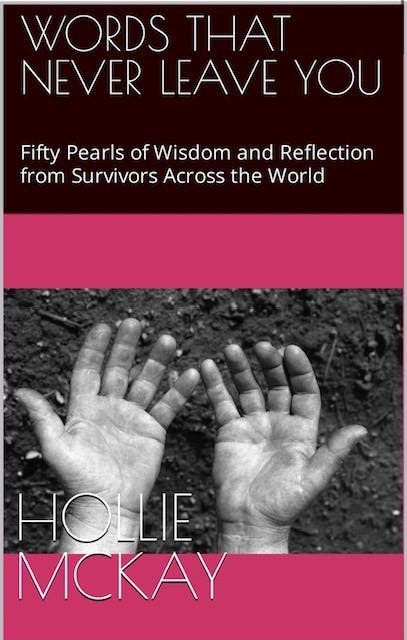“People come for all the things they can do,” the man says, stepping into the dimly lit three-dimensional world. “But they stay for all the things they can be… It’s the only place that feels like I mean anything.”
You may have heard the term “Metaverse” or “Web Three” – it is no longer a futuristic place of lifelike avatars and chillingly real interactions and encounters. Instead, the third evolution of an all-immersive internet is here. It’s the place many of us, if we aren’t already, will slip into for many waking hours and flay wildly into an empty but stimuli-filled space that feels very real.
However, the illusive new world has perhaps dawned on us before we are ready to deal with the nooks, crannies, and consequences – namely, how to deal with the very real abuse and sexual assault already happening in this quasi-make-believe world.
I have documented multiple incidents of rape, gang rape and groping in the Metaverse, with many cases emanating from the Meta (formerly Facebook) manufactured Horizon Worlds. Those who experience it often say it happens so quickly, with associated shock, that their hands fumble and their mind disassociates before they can quickly activate the “Safe Zone” tool, which enables users to slip into a protective bubble if they feel threatened.

Such disturbing incidences will only grow as the Metaverse makes its way into the mainstream and more homes and schools, which begs the problematic question: who and how will be protected from the slew of predators lurking in this virtual new arena?
It’s easy to dismiss simulated rape and abuse with a scoff that it's not real, but this new-fangled web world we are all stepping into is much more personal than the internet age of the past. Almost everybody builds an avatar that looks like them, and in many ways, the onslaughts are deeply intimate.
But what exactly is the Metaverse?
Technically, it is a combination of “meta” (beyond) and “universe.” First coined by a sci-fi writer in the early nineties, it signifies a sequence of linked digital arenas in which users interact through avatars – doing everything from shopping and dining to attending concerts and playing games.
Many children are already in the socialization fray and creating their own worlds via VR headsets, phones, computers and gaming consoles. Nevertheless, the dangers are abundant and diverse, with predators at the top.
As I see it, a few concerns stem from the unreliable age verification process – full accuracy would require a massive breach of personal security – along with a lack of research on long-term ramifications, policy delays, psychological risks and exposure to inappropriate persons or material.
And as I learned at the recent End Violence Against Women International (EVAW) Conference and Training in Chicago, predators and traffickers have even affirmed their lingo to lure minors through common emojis we all have backed into our computer and smartphone keyboards.
If the problem with online predators wasn't bad enough, the new-fangled Web Three would inevitably add a new headache layer to the process. As it stands, as many as half a million predators lurking in the world wide web pose daily peril to minors. Children between twelve and fifteen are the primary targets. Eighty-two percent of predators are male, and only fifteen percent of parents are aware of their child’s online actions. Moreover, twenty-five percent of children have already been confronted with unwanted pornographic materials online. One in thirty-three have experienced an intrusive sexual solicitation in the past year, and less than ten percent of youth report such disturbances to a trusted adult.
And if history tells us anything, what happens online can have devastating real-life consequences. Let’s remember Backpage.com for a moment. The uber-popular classified ad site launched in 2004 and boomed in 2010 after competitor Craigslist shuttered its “adult services” section. Fast forward to the spring of 2018, when the U.S. Department of Justice announced its seizure of the website after long rumblings. It had morphed into the internet’s top forum for advertisements exhibiting the prostitution of minors at the behest of predators and human traffickers, victimizing thousands of women and children.
Up to 300,000 children are bought and sold for sex within our borders. According to the National Center for Missing and Exploited Children, 73 percent of child trafficking reports came from Backpage.
While it’s closure signaled a major victory for law enforcement, victims and advocates at the time, closing anything online is a Sisyphean task. Thus, I was alarmed to learn at the EVAW conference that the spinoff “One Backpage” is basically the same thing thriving on our interwebs again. This time, it cleverly runs from an offshore location, making it much more challenging to probe.
From a different perspective, shutting down a major site like Backpage doesn’t cue the end of predatorial behavior. However, as noted, it drives it deeper underground or abroad, further complicating the issue.
“Over policing” or efforts to block the emerging Metaverse will likely have the same effect – and a dark Metaverse is probably already gaining traction in the bowels of society.
Nevertheless, the consequences of trauma experienced online should not be underestimated. When it happens in virtual reality, it is likely to be even more distressing due to the all-encompassing experience this technology offers – made worse by the power rush of anonymity the perpetrator can use. There is little accountability, no fingerprints, no authorities and little in the way of forensics typically used by investigators to track suspects. Those who camouflage behind their screens can ultimately evade moral responsibility.
And on the legal front, experts contend that authorities can do little. If moderating social media wasn’t hard enough, overseeing the Metaverse would be far more challenging. Instead, we are wading in entirely new web waters, and laws and policies have not caught up. If an assault occurs, it is unclear who has jurisdiction and if it even technically falls under the umbrella of crime, no matter how disturbing it might be.
However, I don’t want to be all doom and gloom about the future because there is a beautiful upside to this mysterious Metaverse, too. The immersive nature holds profound learning potential for children, from visiting far-flung landmarks and dipping back into ancient history to amplifying the importance of empathy, problem-solving, communication and other human qualities by activating stimulating and engaging learning scenarios.
But, to my somewhat trained eye, the safety features still seem far off. And by all means, none of us should rely solely on Big Tech or the bickering Washington elite to protect our children in this ever-changing arena. Instead, as adults, we should lead by example, jump into Web Three as much as possible to bond and acquire knowledge, stay informed, educate the young on potential dangers and urge balance in the technology-driven cosmos.
Safety from online predatory threats begins on the home front: the sooner, the better. The Metaverse is no longer a futuristic concept – it has already dawned and will only become more omnipresent in all our lives in the months and years to come.
EVAWI was founded in 2003 by Sergeant Joanne Archambault. During her decades of work with victims, Sergeant Archambault saw a critical need for training law enforcement in how to investigate sexual assault and domestic violence. Criminal justice practitioners simply did not have the training and support they needed to conduct thorough investigations guided by best practices. EVAWI was created to fill this void.
PLEASE CONSIDER A PAID SUBSCRIPTION TO THIS SUBSTACK TO HELP KEEP INDEPENDENT, AGENDA-FREE WRITING AND JOURNALISM ALIVE. THANK YOU SO MUCH FOR YOUR SUPPORT.
For speaking queries please contact meta@metaspeakers.org
Follow me on Instagram and Twitter for more updates
HOLLIE’S BOOKS (please leave a review)
** Short read of meaningful lessons gleaned from the ordinary forced to become extraordinary
Order your copy of “Afghanistan: The End of the US Footprint and the Rise of the Taliban Rule” due out this fall.
For those interested in learning more about the aftermath of war, please pick up a copy of my book “Only Cry for the Living: Memos from Inside the ISIS Battlefield.”
If you want to support small businesses:















Protecting Children from Predators in the Metaverse: We aren't ready for what comes next